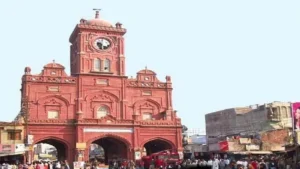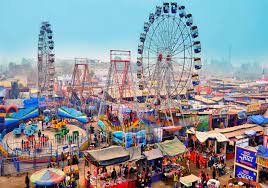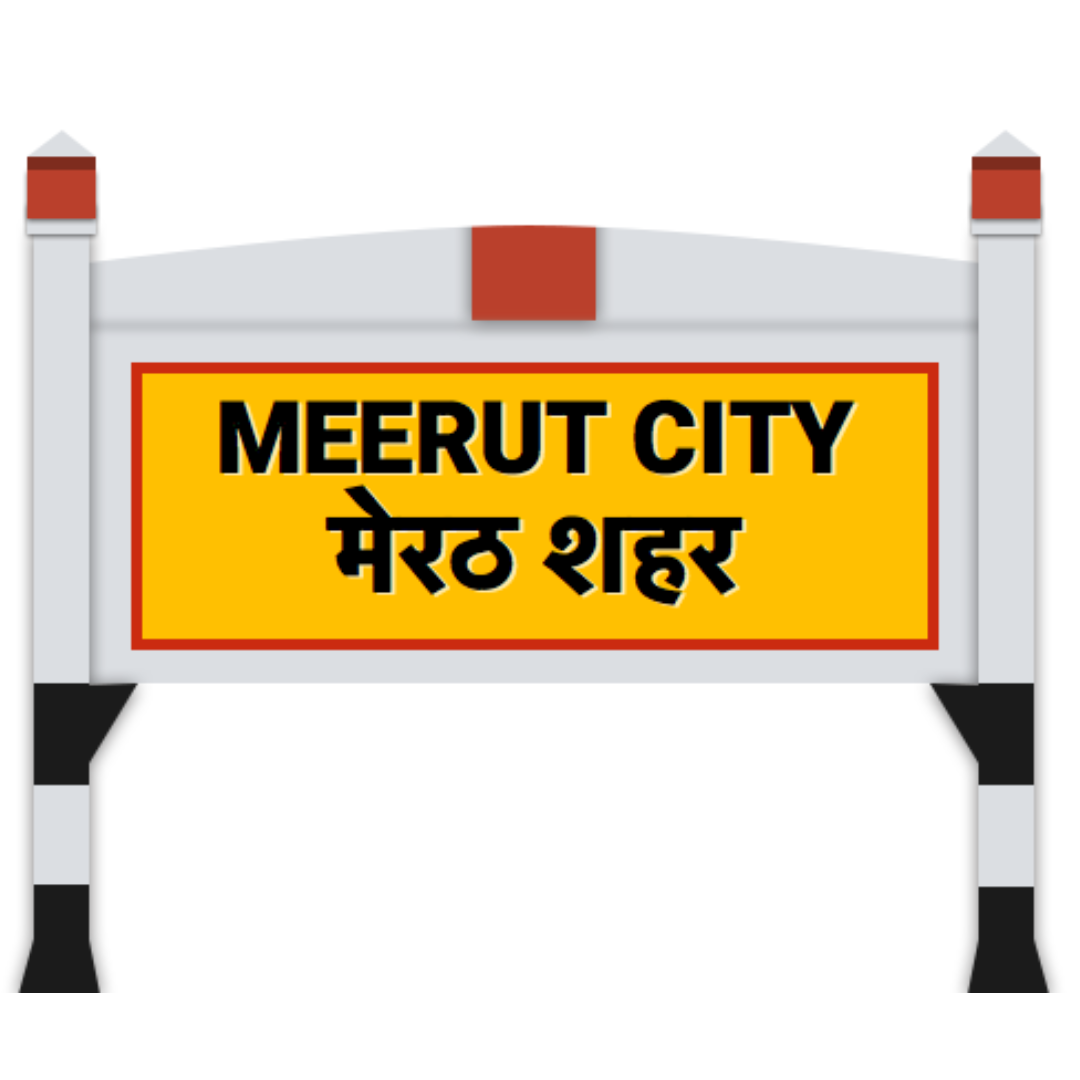Meerut, a historic city located in the northern Indian state of Uttar Pradesh, played a significant role in India’s struggle for independence. With its rich historical heritage and a multitude of brave revolutionaries, Meerut’s became a prominent center for nationalist activities during the colonial era.
This article explores the pivotal role played by Meerut’s in India’s freedom struggle, highlighting the courageous acts of its freedom fighters, the historical events that unfolded in the city, and the lasting impact it had on the fight for independence.
The Historical Significance of Meerut
Meerut’s, with its strategic location near Delhi and its historical importance as an ancient trade route, has always held a prominent position in India’s history.
The city traces its roots back to the Indus Valley Civilization and has witnessed the rise and fall of various dynasties, including the Mauryas, Guptas, and Mughals. However, it was during the British colonial rule that Meerut’s emerged as a center of resistance and rebellion.
The First War of Independence: 1857 The Spark that Ignited the Flame

The year 1857 marked a turning point in India’s struggle for independence, and Meerut’s was at the heart of this historic event.
The city witnessed the outbreak of the famous “Sepoy Mutiny,” which later came to be known as the “First War of Independence” against the British East India Company. The events that unfolded in Meerut became a catalyst for the wider rebellion that spread across the country.
The Meerut Sepoy Mutiny
On May 10, 1857, Meerut’s became the epicenter of the revolt when Indian soldiers, known as sepoys, stationed in the Meerut Cantonment, refused to use the newly issued cartridges greased with animal fat, which was against their religious beliefs. The subsequent arrest and punishment of the sepoys for their refusal to use the cartridges led to a widespread mutiny.
The Rebellion Spreads
The rebellion that started in Meerut’s quickly spread to other parts of India, with Meerut’s revolutionaries playing a crucial role in inspiring and leading the resistance.
Leaders like Mangal Pandey, a soldier in the 34th Bengal Native Infantry, became symbols of courage and defiance, and their actions reverberated throughout the country, galvanizing the masses to rise against British oppression.
The Revolutionary Movement in Meerut, Meerut as a Hotbed of Revolutionary Activities
Following the 1857 uprising, Meerut’s became a hotbed of revolutionary activities. It served as a base for several secret societies and organizations that were formed with the aim of liberating India from British rule.
These organizations, such as the Hindustan Republican Association (HRA), played a crucial role in shaping the future of India’s freedom struggle.
The Rise of Revolutionary Leaders
Meerut’s nurtured numerous brave leaders who fearlessly challenged the British Raj. Notable among them were Chandra Shekhar Azad, Ashfaqullah Khan, and Ram Prasad Bismil, who played pivotal roles in the revolutionary movement. Their indomitable spirit and dedication to the cause of freedom inspired countless others to join the struggle.
The Kakori Conspiracy Case
One of the most significant events in Meerut’s revolutionary history was the Kakori Conspiracy Case of 1925. Led by Ram Prasad Bismil and Ashfaqullah Khan, a group of revolutionaries executed a train robbery near Kakori, a small town near Lucknow. The incident shook the British administration and became a defining moment in the fight against colonial rule.
The Impact of Meerut’s Contribution
Meerut’s contribution to India’s freedom struggle had a lasting impact on the course of the independence movement.
The city became a symbol of resistance and resilience, inspiring people across the nation to join the fight against British oppression. Here are some key aspects highlighting the impact of Meerut’s contribution:
Awakening the Masses
The events that unfolded in Meerut’s during the First War of Independence served as a wake-up call for the Indian masses. The bravery and determination displayed by the revolutionaries inspired a sense of nationalism and unity among the people.
It ignited a fervor for freedom that spread like wildfire, leading to widespread protests and uprisings in different parts of the country.
Strengthening the Freedom Movement
Meerut’s role in nurturing revolutionary leaders and secret societies played a crucial role in strengthening the overall freedom movement. The city became a center for ideological discussions, strategic planning, and the dissemination of revolutionary literature. The courage and sacrifice of Meerut’s freedom fighters served as a beacon of hope, encouraging others to actively participate in the struggle.
Shaping Nationalistic Ideals
The revolutionary activities in Meerut’s helped shape the nationalistic ideals that became the foundation of India’s freedom struggle.
Leaders like Chandra Shekhar Azad and Ram Prasad Bismil, who hailed from Meerut’s, advocated for a free and independent India based on principles of equality, justice, and self-determination. Their ideologies and sacrifices resonated with the masses and contributed to the shaping of a unified national identity.
Inspiring Future Generations
Meerut’s legacy as a bastion of resistance continued to inspire future generations. The stories of courage, sacrifice, and determination of the city’s freedom fighters became part of the collective memory of the nation.
Their struggles and achievements instilled a sense of pride and nationalism in the hearts of Indians, motivating them to carry forward the fight for freedom and social justice.
Preserving the Historical Heritage
Meerut, with its historical significance in India’s freedom struggle, has made efforts to preserve its rich heritage. Several monuments, museums, and memorials dedicated to the freedom fighters have been established in the city. These serve as reminders of the sacrifices made by Meerut’s brave sons and daughters, ensuring that their contributions are not forgotten by future generations.
Recognition and Commemoration
Over the years, the Indian government has recognized and honored the role of Meerut in the freedom struggle. The city has been the site of various commemorative events, and its contribution has been acknowledged through the naming of roads, schools, and institutions after the freedom fighters. This recognition serves as a testament to the enduring impact of Meerut’s role in shaping the destiny of India.
FAQs about the Role of Meerut in India’s Freedom Struggle
- Q: Who were some of the prominent freedom fighters from Meerut?
A: Some prominent freedom fighters from Meerut’s include Mangal Pandey, Chandra Shekhar Azad, Ashfaqullah Khan, and Ram Prasad Bismil. - Q: What was the significance of the Kakori Conspiracy Case?
A: The Kakori Conspiracy Case was a landmark event in Meerut’s revolutionary history. It highlighted the daring nature of the freedom fighters and exposed the oppressive tactics of the British administration. - Q: How did Meerut contribute to the overall freedom movement in India?
A: Meerut’s played a crucial role in awakening the masses, nurturing revolutionary leaders, and shaping nationalistic ideals. Its contribution inspired people across the country and strengthened the fight for independence. - Q: Are there any notable monuments or memorials in Meerut dedicated to the freedom fighters?
A: Yes, Meerut’s has several monuments and memorials dedicated to the freedom fighters, such as the Mangal Pandey Park, Chandra Shekhar Azad Park, and the Kakori Memorial, among others. These landmarks serve as reminders of the sacrifices made by the brave revolutionaries and provide a space for reflection and remembrance.- Q: How did the events in Meerut during the First War of Independence impact the wider rebellion in India?
A: The events in Meerut served as a spark that ignited the wider rebellion against British rule. The courage displayed by the sepoys and the subsequent spread of the mutiny inspired people from different regions to join the fight, leading to a united front against the British oppressors. - Q: What is the significance of Meerut’s historical heritage today?
A: Meerut’s historical heritage holds great significance as it reminds us of the sacrifices and struggles endured by our freedom fighters. It serves as a source of inspiration for future generations and reinforces the importance of preserving our history and cherishing the hard-fought independence we enjoy today.
Conclusion
Meerut’s, with its rich historical heritage and courageous freedom fighters, played a pivotal role in India’s struggle for independence.

From being the epicenter of the First War of Independence to nurturing revolutionary leaders and shaping nationalistic ideals, the city left an indelible mark on the course of the freedom movement.
Meerut’s brave sons and daughters fought against British oppression, inspiring millions and contributing to the eventual realization of an independent India. Their sacrifices and unwavering determination continue to inspire us, reminding us of the price that was paid for our freedom.
In the present day, Meerut stands as a testament to the power of resilience, unity, and the unwavering spirit of the Indian people.
As we honor the legacy of Meerut and its freedom fighters, let us strive to preserve our historical heritage, cherish the values they fought for, and ensure that their sacrifices are never forgotten.
- Q: How did the events in Meerut during the First War of Independence impact the wider rebellion in India?
Read More: Odisha Train Accident Claims 233 Lives, Over 900 Injured




